3 остеология.pptx
- Количество слайдов: 19
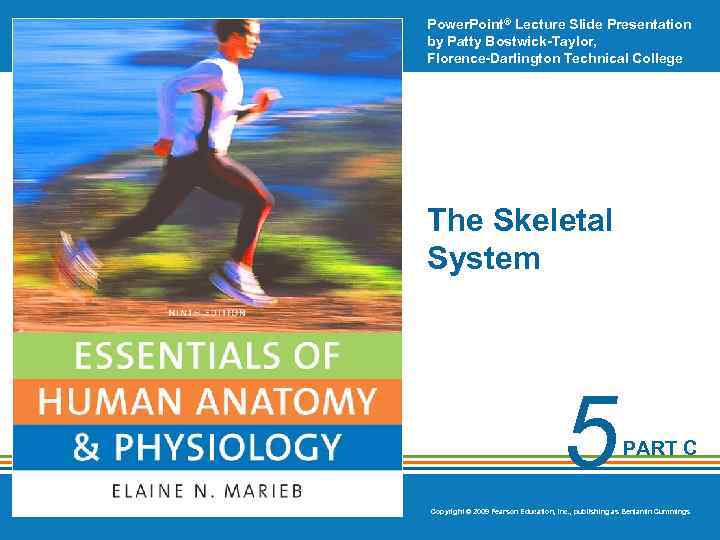
Power. Point® Lecture Slide Presentation by Patty Bostwick-Taylor, Florence-Darlington Technical College The Skeletal System 5 PART C Copyright © 2009 Pearson Education, Inc. , publishing as Benjamin Cummings

The Fetal Skull § The fetal skull is large compared to the infant’s total body length § Fontanels—fibrous membranes connecting the cranial bones § Allow the brain to grow § Convert to bone within 24 months after birth Copyright © 2009 Pearson Education, Inc. , publishing as Benjamin Cummings
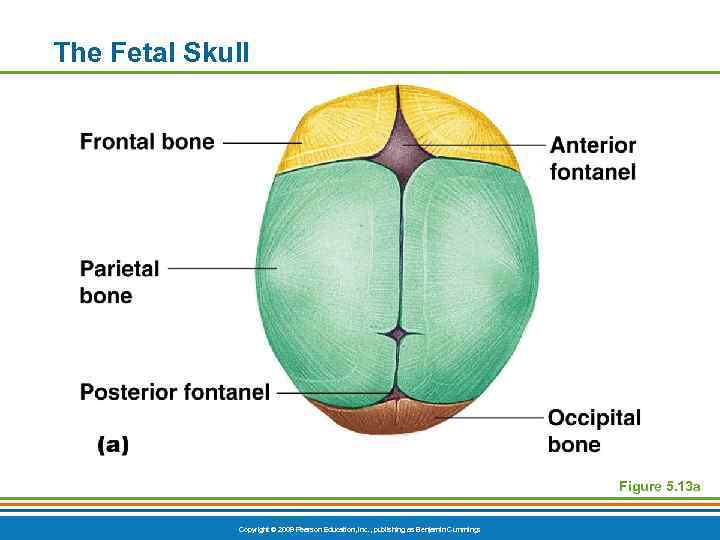
The Fetal Skull Figure 5. 13 a Copyright © 2009 Pearson Education, Inc. , publishing as Benjamin Cummings
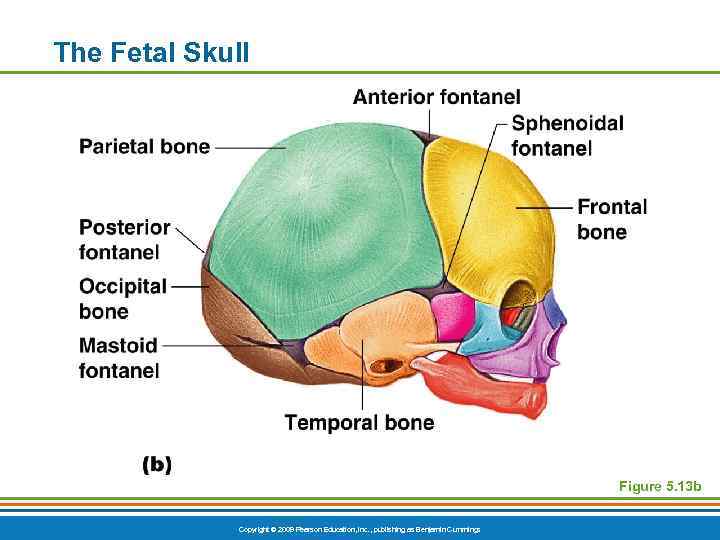
The Fetal Skull Figure 5. 13 b Copyright © 2009 Pearson Education, Inc. , publishing as Benjamin Cummings
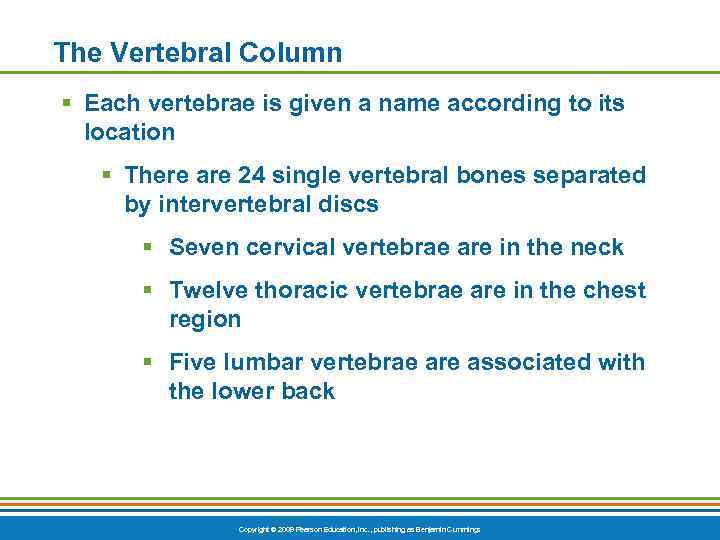
The Vertebral Column § Each vertebrae is given a name according to its location § There are 24 single vertebral bones separated by intervertebral discs § Seven cervical vertebrae are in the neck § Twelve thoracic vertebrae are in the chest region § Five lumbar vertebrae are associated with the lower back Copyright © 2009 Pearson Education, Inc. , publishing as Benjamin Cummings
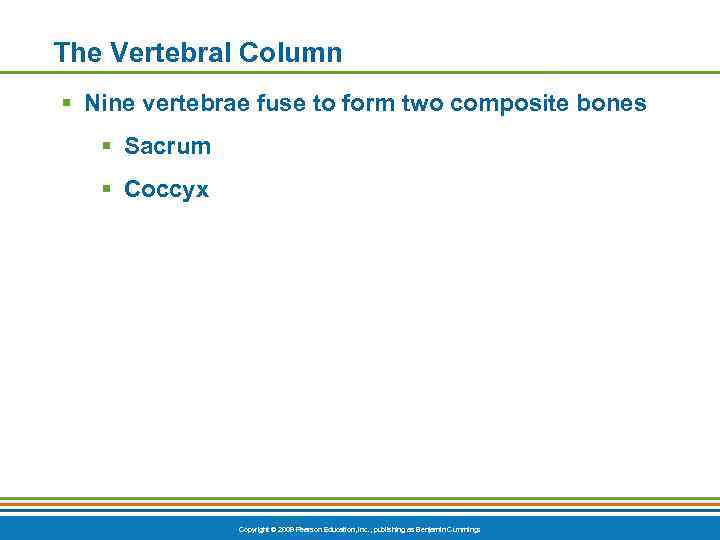
The Vertebral Column § Nine vertebrae fuse to form two composite bones § Sacrum § Coccyx Copyright © 2009 Pearson Education, Inc. , publishing as Benjamin Cummings
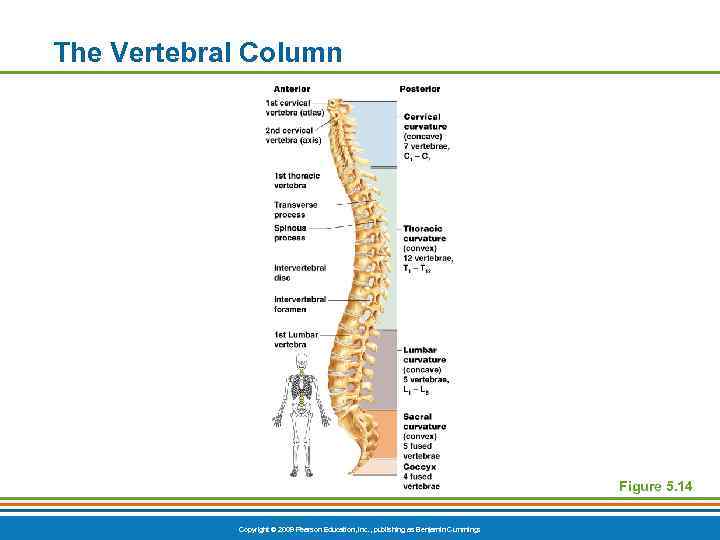
The Vertebral Column Figure 5. 14 Copyright © 2009 Pearson Education, Inc. , publishing as Benjamin Cummings

The Vertebral Column § The spine has a normal curvature § Primary curvatures are the spinal curvatures of the thoracic and sacral regions § Present from birth § Secondary curvatures are the spinal curvatures of the cervical and lumbar regions § Develop after birth Copyright © 2009 Pearson Education, Inc. , publishing as Benjamin Cummings
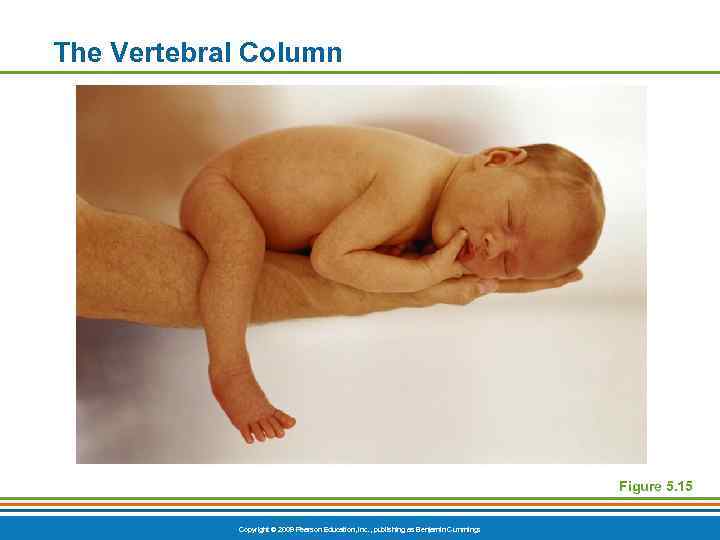
The Vertebral Column Figure 5. 15 Copyright © 2009 Pearson Education, Inc. , publishing as Benjamin Cummings
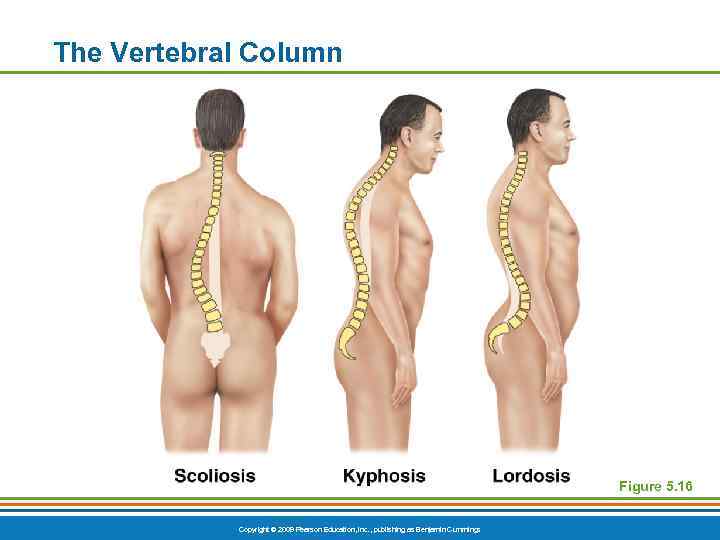
The Vertebral Column Figure 5. 16 Copyright © 2009 Pearson Education, Inc. , publishing as Benjamin Cummings
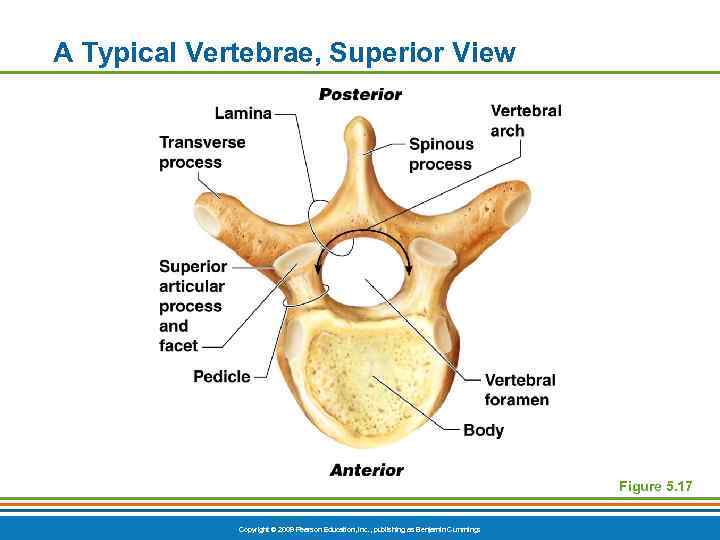
A Typical Vertebrae, Superior View Figure 5. 17 Copyright © 2009 Pearson Education, Inc. , publishing as Benjamin Cummings
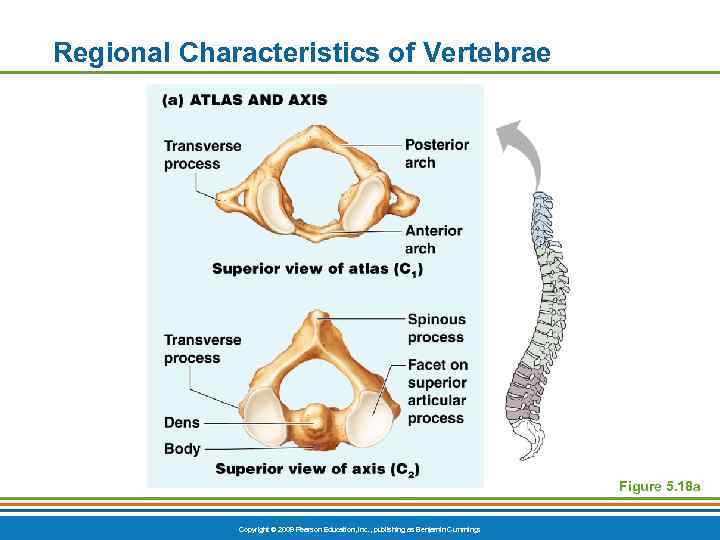
Regional Characteristics of Vertebrae Figure 5. 18 a Copyright © 2009 Pearson Education, Inc. , publishing as Benjamin Cummings
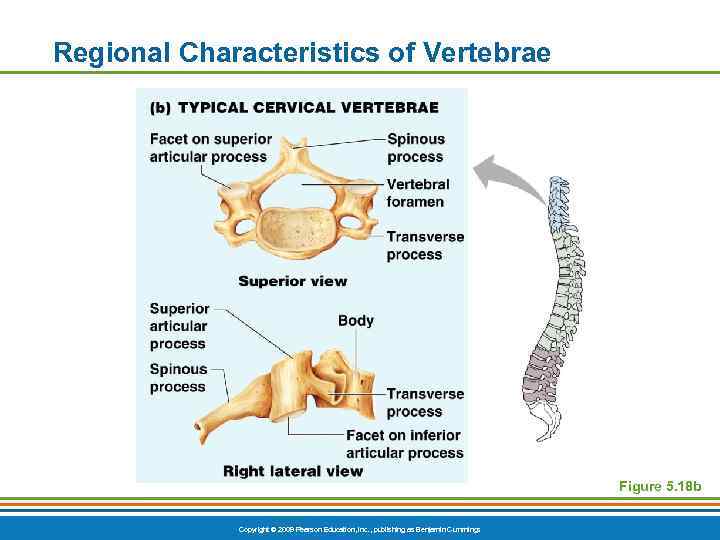
Regional Characteristics of Vertebrae Figure 5. 18 b Copyright © 2009 Pearson Education, Inc. , publishing as Benjamin Cummings
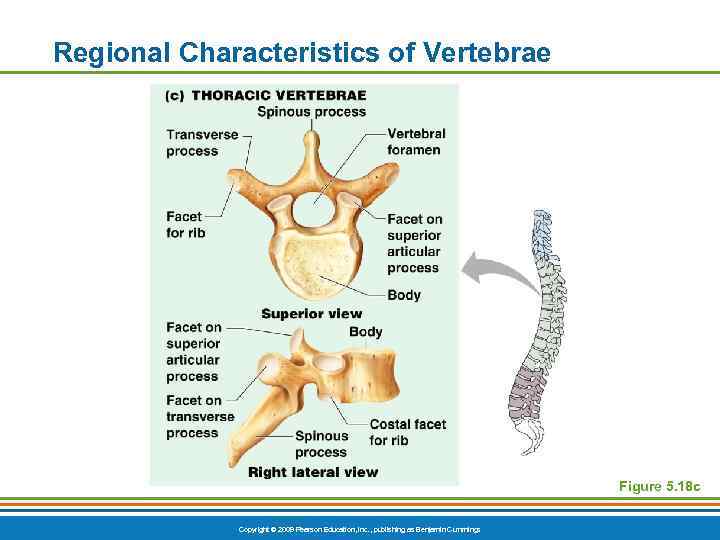
Regional Characteristics of Vertebrae Figure 5. 18 c Copyright © 2009 Pearson Education, Inc. , publishing as Benjamin Cummings

Regional Characteristics of Vertebrae Figure 5. 18 d Copyright © 2009 Pearson Education, Inc. , publishing as Benjamin Cummings
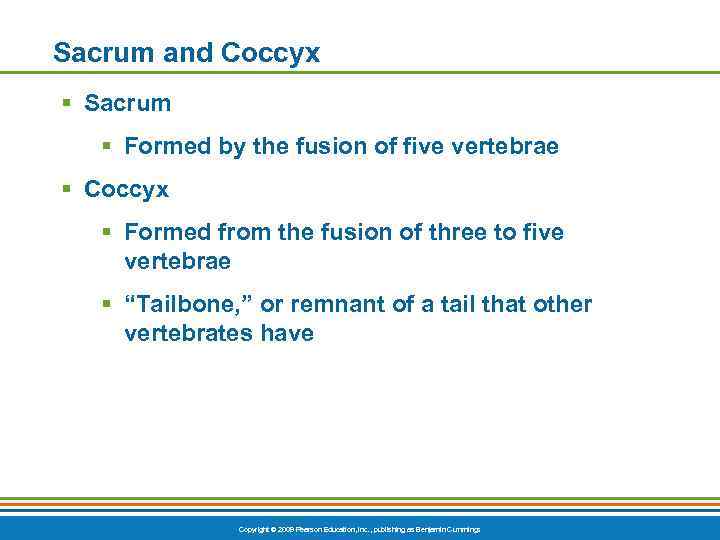
Sacrum and Coccyx § Sacrum § Formed by the fusion of five vertebrae § Coccyx § Formed from the fusion of three to five vertebrae § “Tailbone, ” or remnant of a tail that other vertebrates have Copyright © 2009 Pearson Education, Inc. , publishing as Benjamin Cummings
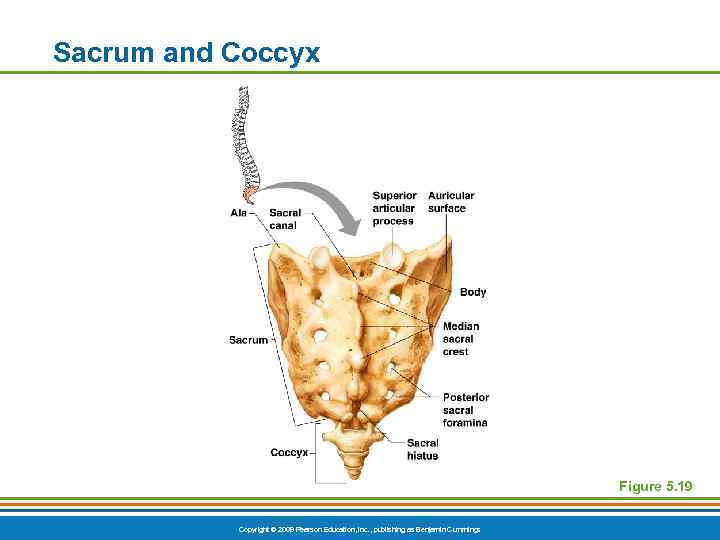
Sacrum and Coccyx Figure 5. 19 Copyright © 2009 Pearson Education, Inc. , publishing as Benjamin Cummings
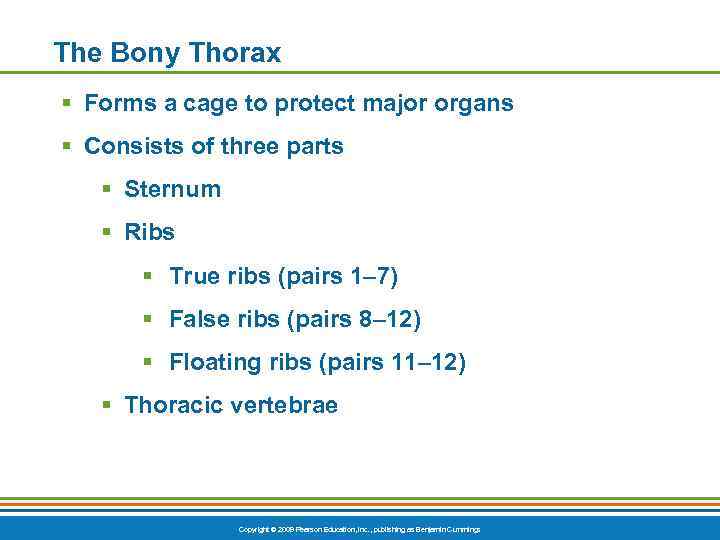
The Bony Thorax § Forms a cage to protect major organs § Consists of three parts § Sternum § Ribs § True ribs (pairs 1– 7) § False ribs (pairs 8– 12) § Floating ribs (pairs 11– 12) § Thoracic vertebrae Copyright © 2009 Pearson Education, Inc. , publishing as Benjamin Cummings
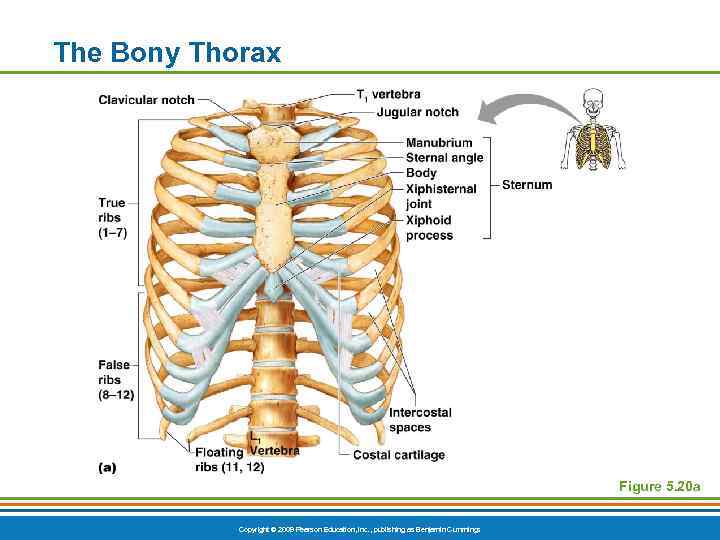
The Bony Thorax Figure 5. 20 a Copyright © 2009 Pearson Education, Inc. , publishing as Benjamin Cummings
3 остеология.pptx